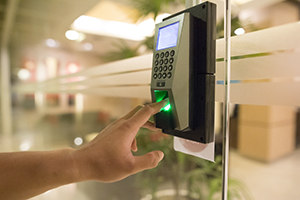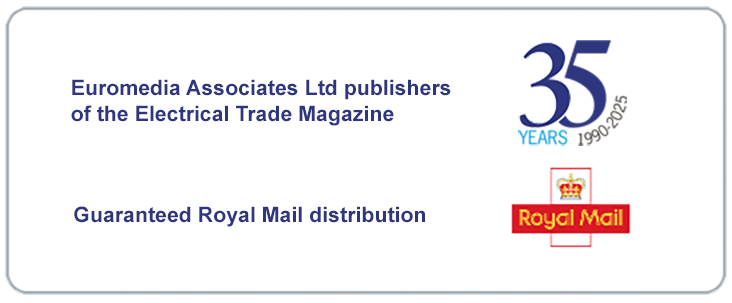Access control is one of, if not, the most important element of building security. It is vital in so many ways, not only from an anti-intruder or theft perspective but also in terms of health and safety.
In almost every building – whether that’s an office block, a school, a hospital or a shopping centre – many people enter, exit and move around the premises. It is crucial therefore that access into and around buildings, where people are granted or denied entry to certain zones at different times, is managed effectively.
Every building is different and presents its own challenges. It is therefore important to find a flexible door entry system which can be adapted to that particular building to meet a client’s requirements.
During the planning stages, it’s important to understand the function of the building and the type of use the system will have. You have to ask yourself (and know the answer to) a range of questions. For example, which entrances and exits require access control? Should the access control be in the form of coded keypads, proximity fob readers or a type of biometric reader? Should the door entry include video as well as audio communication? Do these entrances need to service tenants or employees? Do they also need to service visitors or customers?
The exit of buildings in particular requires additional thought. For instance, in the event of an emergency how would someone negotiate the access control to exit the building? Solutions to this would normally include break glass units and links to the fire alarm to automatically release the doors. An appropriate access control system can also generate reports to show who is in the building at the time of the alarm so you’re aware of peoples’ location in the event of an emergency.
Legislation also plays a key role in access control. Building regulations must be followed when putting an appropriate system in place and thought must go into how access control will, for example, affect users with disabilities following the Equality Act 2010 guidelines. Secured By Design, the official UK Police flagship initiative supporting the principles of designing out crime, may also be specified which means only those products that have passed the stringent tests of Secured By Design should be used.
When installing an access control system, there are also physical challenges to be aware of. Most access control and door entry systems are connected together throughout the building using low voltage cabling. Quite often, the cabling is installed as part of the first fix and sometimes the access control and door entry equipment has not been fully specified at this stage. It’s a good idea therefore to know what the right cable to install is because, in the long run, this will save you time and money.
A common cable type installed at the first fix would be Cat. This cable is suitable for many door entr y and access control systems but care must be taken to fully understand the distances between devices to ensure the cable resistance falls within the manufacturer’s guidelines.
y and access control systems but care must be taken to fully understand the distances between devices to ensure the cable resistance falls within the manufacturer’s guidelines.
An issue that has become increasingly apparent is the need to know the difference between solid copper and copper coated cables. In most instances, solid copper must be used on door entry and access control systems due to the need for these cables to carry current and have a low voltage drop. Copper coated cables such as copper coated steel (CCS) or copper coated aluminium (CCA) although may look attractive when comparing the price between that and solid copper will have a much higher resistance and therefore will suffer from much greater voltage drop than a solid copper cable. Not knowing this difference can prove costly in the event the system is unable to function correctly due to a voltage drop.
When choosing a system, it is also important to know that it can be modified in the future if a building is expanded or undergoes a change of use. Product support, which is what we offer at Videx, is crucial when dealing with a customised solution. Knowing that there is support available either online, via phone or on site, can offer reassurance should you run into a problem that you can’t resolve on your own.
Videx offers bespoke systems designed with individual requirements including the facility to create customer firmware and software should a particular feature not be available as standard. We can, for example, create bespoke wiring diagrams, panel layouts and offer training to installers.
New access control systems are constantly being developed so it’s important to keep abreast of the latest offerings. Ultimately, the best advice I can give in choosing the right system is that you need to first understand the client’s needs and any specifications they’ve requested. An out-of-box solution isn’t always available therefore it’s always best to talk to the manufacturer who will be able to listen to your requirements. Using their knowledge of access control systems, they can then help you find the one that best suits your requirements and, critically, meets the client’s needs.






